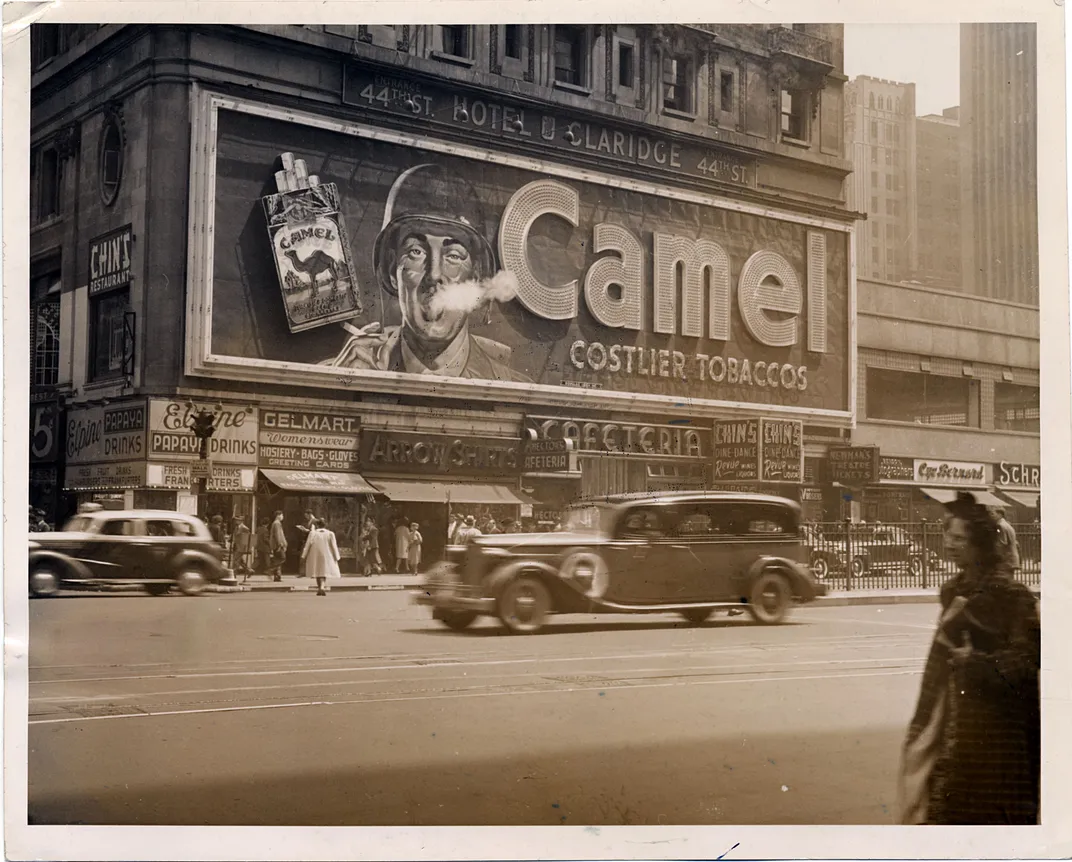Times Square’s Glitzy Look was One Man’s Bright Idea
Douglas Leigh’s ability to imagine new kinds of advertising shaped the signs of the city
/https://tf-cmsv2-smithsonianmag-media.s3.amazonaws.com/filer/a0/dc/a0dc2d4d-4617-4062-9dba-fd4d7712fc96/leigh_0005_cropped.jpg)
"From the beginning of time, darkness has brought on fear," sign designer Douglas Leigh said. "Lighting lifts the spirits."
The lights of Times Square are Leigh’s best-known legacy. On this day in 1937, he took a big step forward when he introduced the first animated electric sign, a precursor to modern LED billboards.
“It used 2,000 bulbs and its four-minute show included a cavorting horse and ball-tossing cats,” according to Today in Science History. The sign—photographs of it are unfortunately lost to posterity—was designed by Dorothy Shepard, a talented mid-century billboard designer and graphic artist, but Leigh masterminded the project. It was an innovation in lights that came to characterize mid-century American cities almost as much as neon. In a time when people didn’t own television sets and may not have had the money to go to the movies, it was also a five-minute-long free show.
The designer, who described himself as “an idea man, a concept guy,” rather than an artist, helped to give New York “an entire nighttime identity,” in the words of one architecture critic. His innovations ranged from the cartoon sign to ads for coffee that gave off real steam, writes Elaine Woo for the Los Angeles Times.
Leigh’s greatest skill was finding the medium for the (advertising) message. He kept coming up with new ideas, wrote Robert Sellmer for Time Magazine in 1946. “Everybody talks about the man on the street but nobody does anything about him,” Sellmer wrote.
Nobody, that is, except Douglas Leigh… who dazzles him with neon lights, showers him with soap bubbles, fascinates him with animated cartoons, belabors him with candle power, blows smoke rings over his head, screams the time and the weather at him, whizzes posters past his nose on the sides of express trucks and generally attempts as spectacularly as possible to beguile him into buying beer, cola, cough medicine, cigarets [sic] and similar objects, useful or ornamental.
Leigh’s talents found a major outlet in the changing consumer culture of the 1930s-1960s. Advertisers were look for ways to reach customers who were living new lives shaped by cars, the Depression, the baby boom and many other factors. His creativity shows in one of his best-known sign innovations, which wasn’t lighted at all. It was an ad for Camel Cigarettes, first displayed in 1942, that blew real smoke rings.

New York was under a “dim-out,” wrote Popular Mechanics at the time, because light pollution from the massive metropolis was creating too much light on the ocean, which enabled German submarines to spot ships moving atop the water. That meant the lights which were already crowding Broadway—many of which had been created by Leigh in the years since he started doing signs in 1933—would have to go.
“While all his signs stood dark and the sign business assumed he was ruined, Leigh went to work on a new spectacular without lights,” Sellmer wrote. “It turned out to be his most successful venture—the Camel sign, from which a painted soldier’s mouth blows real smoke rings across Times Square.”
By the time the war ended, wrote Christopher Gray for The New York Times, Leigh's imagination had moved on from the hard brightness of neon and glowing bulbs. Aided by the success of the smoking sign:
He saw wind machines blowing trees and flags, searchlights playing on blimps, bubble machines, artificial snow and fog, the smells of coffee and cocoa and beer, even live giraffes and other animals, making Times Square a giant performance event in the service of advertising.
That never quite happened, and Leigh himself moved on in the 1970s to lighting buildings rather than streetscapes. But like the lights of Times Square, it's a beautiful dream.